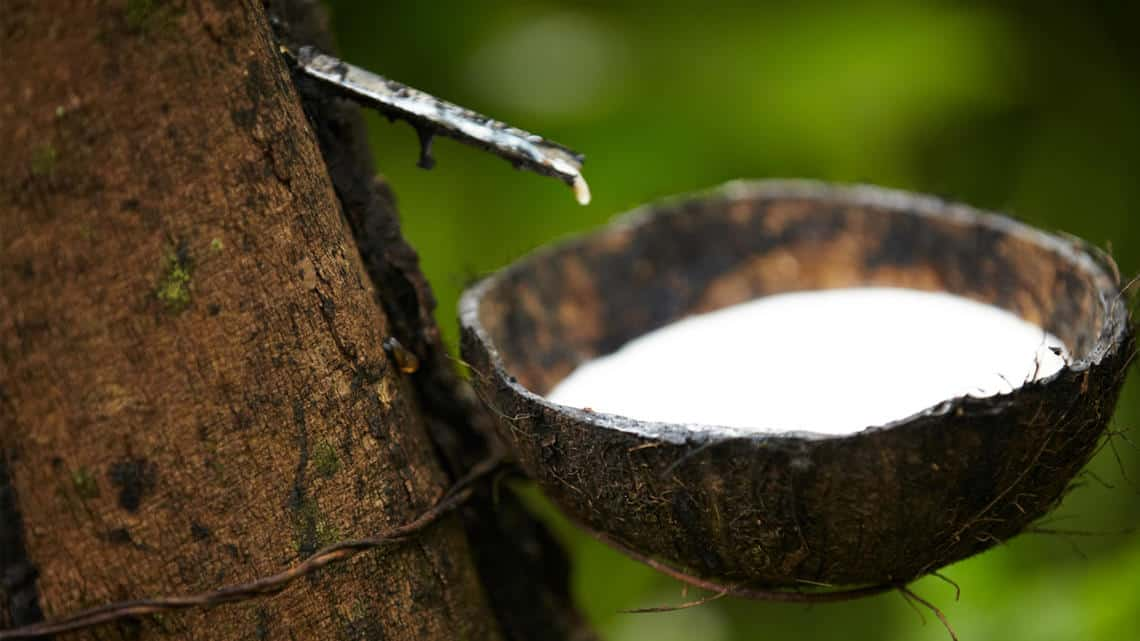- Courses
- GS Full Course 1 Year
- GS Full Course 2 Year
- GS Full Course 3 Year
- GS Full Course Till Selection
- Online Program
- GS Recorded Course
- NCERT (Recorded 500+ Hours)
- Polity Recorded Course
- Geography Recorded Course
- Economy Recorded Course
- AMAC Recorded Course
- Modern India, Post Independence & World History
- Environment Recoded Course
- Governance Recoded Course
- Science & Tech. Recoded Course
- International Relations and Internal Security Recorded Course
- Disaster Management Module Course
- Ethics Recoded Course
- Essay Recoded Course
- Current Affairs Recoded Course
- CSAT
- 5 LAYERED ARJUNA Mentorship
- Public Administration Optional
- ABOUT US
- OUR TOPPERS
- TEST SERIES
- FREE STUDY MATERIAL
- VIDEOS
- CONTACT US
India facing acute shortage of natural rubber
India facing acute shortage of natural rubber

India is experiencing a significant shortage of natural rubber (NR), with domestic production lagging behind demand by approximately 5.5 lakh tonne. Despite an increase in NR production from 8.39 lakh tonne in 2022-23 to 8.57 lakh tonne in 2023-24, consumption has surged from 13.5 lakh tonne to 14.16 lakh tonne, maintaining the large deficit.
- This situation has led to importing challenges due to high customs duties and availability issues, resulting in soaring prices and a potential crisis for industries reliant on NR.
Causes of Shortage:
- Demand-Supply Gap:
- Production Increase: Domestic NR production rose from 8.39 lakh tonnes in 2022-23 to 8.57 lakh tonnes in 2023-24.
- Consumption Surge: NR consumption surged from 13.5 lakh tonnes to 14.16 lakh tonnes during the same period.
- Tyre Industry: Approximately 70% of NR is consumed by the tyre industry. The remaining 30% is used by non-tyre sectors, primarily small and micro enterprises, which are experiencing severe impacts due to the shortage.
- Import Dependence:
- Historical Context: India has historically depended on NR imports due to insufficient domestic production.
- Major Suppliers: Key importing countries include Vietnam, Indonesia, Thailand, China, South Korea, and Japan.
- High Import Duty: NR imports face a 25% customs duty or Rs 30 per kg, whichever is higher. Latex rubber used for making gloves and balloons has a total duty of 75%. However, imported mattresses, balloons, or surgical gloves have a much lower duty of 10%, leading to an inverted duty structure where the tax on inputs is higher than on finished goods.
- Geopolitical Situation:
- China’s Stockpiling: China is stockpiling NR, impacting global availability.
- Bangladesh Turmoil: Political protests and government changes in Bangladesh, a previously reliable NR source, have disrupted supply.
- Monsoon Impact:
- Weather Effects: Heavy monsoons reduce tapping activities, which particularly impacts industries dependent on NR.
Key Facts About Rubber
- Nature and Types:
- Rubber: An elastic material that deforms under force and regains its shape when the force is removed.
- Types:
- Natural Rubber: Produced from latex, a milky fluid from rubber trees, containing proteins, starch, alkaloids, etc. It is an important polymer for various products.
- Synthetic Rubber: Produced chemically as an alternative to natural rubber.
- Production and Trade:
- India’s Ranking:
- Production: India is the 3rd largest producer and the 4th largest consumer of natural rubber globally.
- Consumption: India is the 5th largest consumer of both natural and synthetic rubber combined.
- Leading States: Kerala is the largest producer, followed by Tripura.
- Exports: In 2022-23, India exported 3,700 tonnes of NR. Major export markets include the USA, Germany, UAE, UK, and Bangladesh.
- Imports: India imported 5,28,677 tonnes of NR in 2022-23, primarily from Indonesia, Thailand, China, South Korea, and Japan.
- India’s Ranking:
- Growth Factors:
- Climate: Rubber requires tropical conditions, with temperatures between 20°-35°C and an average monthly mean of 27°C.
- Soil: Grows best in loamy or laterite soil, typically on sloped or slightly elevated flat land with good drainage and no risk of water stagnation.
- Rainfall: Requires more than 200 cm of annual rainfall.
- Labour: Needs a cheap and adequate supply of skilled labour.
Government Initiatives
- Sustainable & Inclusive Development of Natural Rubber Sector (SIDNRS):
- Focuses on sustainable development and inclusivity in the rubber sector.
- Rubber Plantation Development Scheme and Rubber Group Planting Scheme:
- Objectives: Support new plantings and replanting efforts, including group planting initiatives.
- National Rubber Policy 2019:
- Formulated By: Ministry of Commerce & Industry.
- Basis: Strategies identified by a Task Force to address challenges faced by rubber growers.
- Key Provisions: Covers new planting, replanting, support for growers, processing, marketing, labor shortage, grower forums, external trade, Centre-State strategies, research, training, and climate change concerns. It also addresses the carbon market.
- Implementation: Managed by the Rubber Board, which provides financial and technical assistance, quality planting materials, and supports grower forums and training programs.
- Rubber Board:
- Role: Statutory body established under the Rubber Act, 1947, for the development of the rubber industry. Functions under the Ministry of Commerce & Industry. The Board is headquartered in Kottayam, Kerala, and oversees the Rubber Research Institute.
What Can Be Done to Increase Rubber Production in India?
- Expand Support Under the National Rubber Policy:
- Increase subsidies and financial assistance for new plantings and replanting.
- Skill Development:
- Enhance training programs for growers to improve cultivation techniques and productivity.
- Invest in Research:
- Increase funding for research on high-yielding and disease-resistant rubber varieties through government-supported research institutions and universities.
- Collaborative Projects:
- Promote collaborations between the government and private sector to invest in rubber plantations and processing infrastructure.
Conclusion
India’s rubber industry, crucial to the economy, faces a persistent shortage, leading to increased imports and high costs. To address this issue, it is essential to boost domestic production, enhance supply chains, and support policies like the National Rubber Policy 2019. Focused growth, research investment, and policy support will be key to reducing import dependency and meeting domestic demand effectively.




